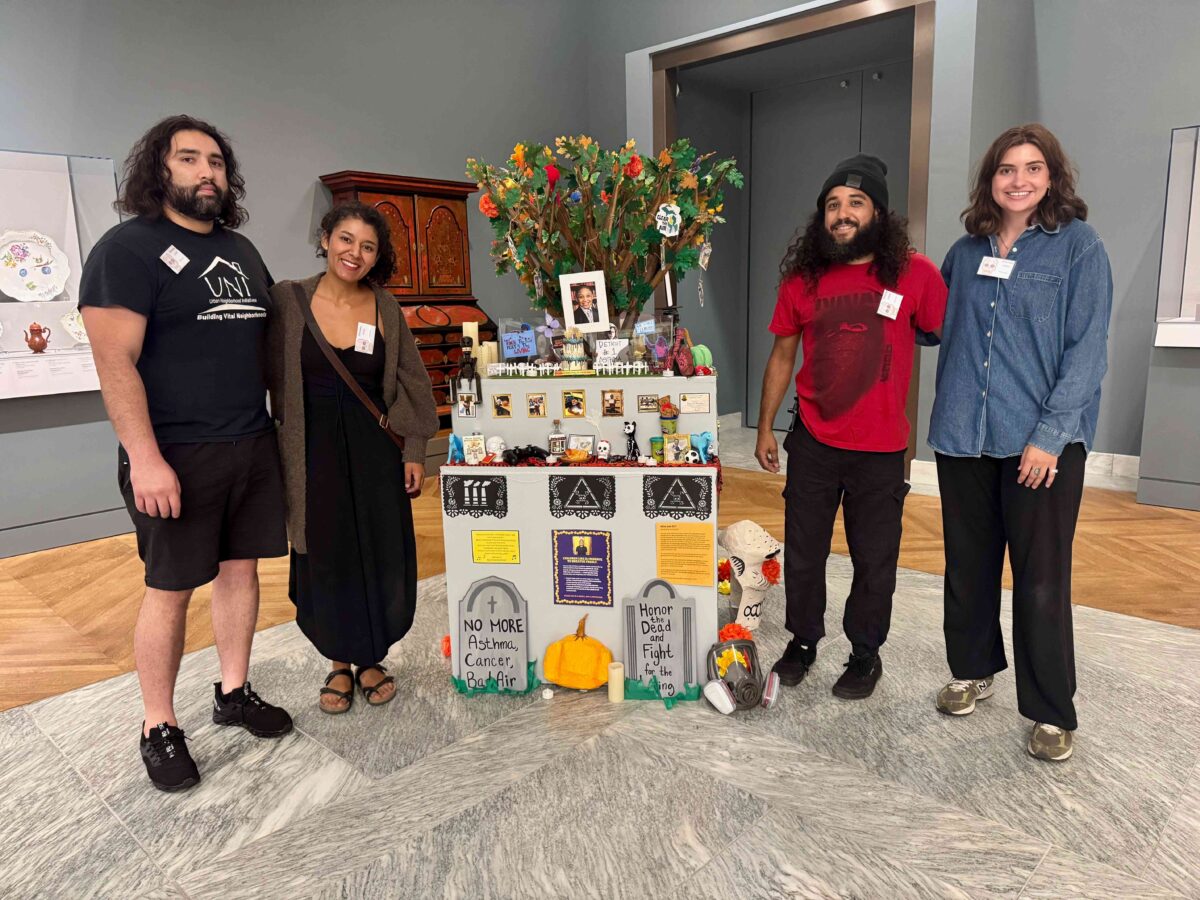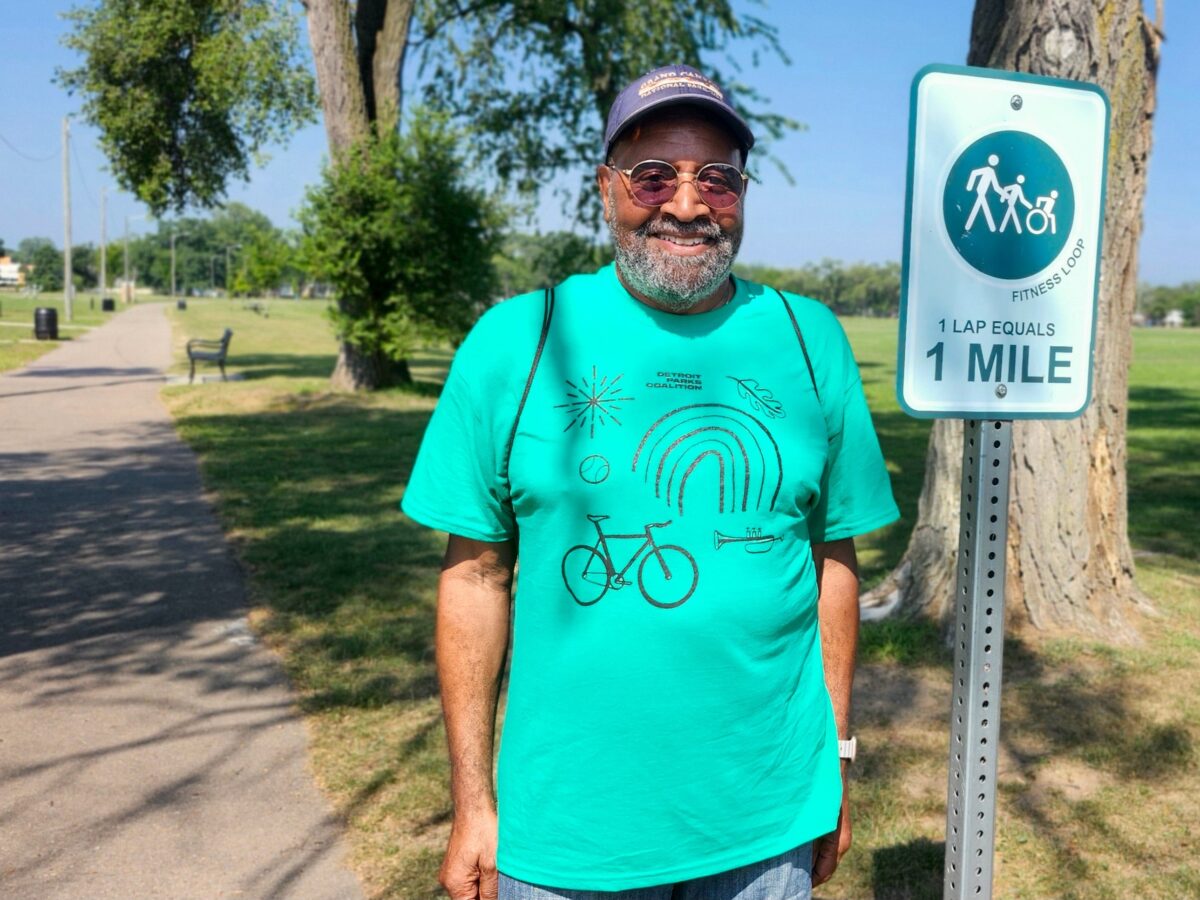Overview:
- The youngest person honored in a Day of the Dead altar at the Detroit Institute of Arts is Darnell "DJ" Patton, who had asthma and was 10 when he died.
- "This project shows that pollution has no boundaries, and neither does death," says environmental activist Theresa Landrum.
- The "Where the Air Remembers and the Trees Dream" altar is on display on the DIA's third floor.
Visitors to the Detroit Institute of Arts may encounter any of a dozen ofrendas scattered throughout the building. A Mexican tradition, these commemorative altars display posthumous photos of loved ones, along with significant objects and symbols representing them.
One ofrenda, titled “Where the Air Remembers and the Trees Dream,” is the creation of environmental activists, representing Clear the Air , Michigan Sierra Club and Urban Neighborhood Initiatives, among others.
The ofrenda features three local residents whose families say they died from air pollution-related illness. The youngest is Darnell “DJ” Patton, who was 10 when he died in 2023.
“He graduated to his next grade on a Friday, and the following Sunday he passed away on the way to the hospital,” says longtime environmental activist Theresa Landrum, a neighbor of Patton’s family.
“He had been struggling with his asthma during a period when we were impacted by Canadian wildfires, sulfur dioxide and other emissions from companies and facilities, as well as wildfires in Upper Michigan.”
Latino community ‘at forefront of the environmental justice struggle’: Activist
The ofrenda project began earlier this year, when Maricela Gutierrez learned the DIA was seeking entries for its 13th annual Dia de Muertos — Day of the Dead — exhibit. She enlisted people from Detroit community organizations to help put one together.
“Originally we planned three separate altars, but the DIA asked us to combine them into one,” says Gutierrez, a strategist at Los Angeles-based Industrious Labs, which works to reduce industrial greenhouse gas emissions.
They ultimately produced a multimedia structure featuring photos, objects, and symbols honoring three lives lived and lost, and their communities. Visitors can scan a QR code to share their experiences with air pollution in Detroit.
“Inside the altar are muted colors representing harm done to residents – a black lung on one side, a dark heart on another, and an hourglass with black sand,” Gutierrez said.
“At the center is a tree of life sprouting from coal, representing a better future where industry can coexist with communities.”
Antonio Cosme, a Southwest Detroit environmental activist, said he finds the DIA installation to be a compelling idea.
“Dia dos Muertos is a Mexican tradition and Southwest Detroit has a large Latino community. And our community is at the forefront of the environmental justice struggle.”
Ani Garabedian, the DIA’s community engagement programs manager, said the selection committee sought altars that honor departed loved ones and highlight broader cultural and social themes.
The environmental groups met the requirements in a powerful way, she said. “This piece deals with the difficult topics of industrial pollution and the impacts on human lives and families.”
The ofrenda features art teacher and community activist Sylvia Silva, who died earlier this year, and steelworker Curley Anderson. Anderson was one of many workers who developed breathing problems after years of working at in a steel mill, said his daughter Rhonda Anderson.
Anderson was the Michigan Sierra Club’s environmental justice organizer until her retirement in 2023. When her father died in 1984, he could never have imagined being part of an artistic work 40 years later, she said.
“My daddy had been a sharecropper in Mississippi and became a laborer when he came here,” she says. “He was a hi-lo driver. He brought in the bricks that they used along the back of the furnace where the hot steel was.”
‘Pollution has no boundaries’
Alexa Arriaga, who works with Urban Neighborhood Initiatives while studying illustration at the College for Creative Studies, said having a piece in the exhibition a significant achievement for an artist.
“It feels great to say that my name is on something at the DIA,” she said.
Landrum says it’s important that a Black boy’s memory is part of this Mexican tradition.
“Detroit has the highest asthma hospitalization rates in the nation, and we don’t often see children who are impacted, especially young Black lives,” she says.
“The project shows that pollution has no boundaries, and neither does death. It crosses cultural lines, bringing together communities.”
The artists will discuss their work at a Nov. 2 panel discussion at the Detroit Institute of Arts. Find their ofrenda, “Where the Air Remembers and the Trees Dream,” on level three of the DIA until Nov. 2.
MORE REPORTING FROM PLANET DETROIT
We Walk Detroit builds health, community step by step in city’s parks: ‘Therapeutic’
The We Walk Detroit initiative will return in 2026 after the last-minute state budget process injected uncertainty into the program’s future.
A Detroit activist’s journey in fight for social justice: ‘Someone you want on your side’
For Detroit activist Erik Shelley, an anti-war rally in Washington, D.C. marks a turning point in his political life.
Detroit’s Port Authority sustainability manager works to cut emissions, build trust with neighbors
Taylor Mitchell, Detroit Wayne County Port Authority’s inaugural sustainability manager, spearheads initiatives to curb diesel emissions and achieve net zero emissions at 23 private terminals along the Detroit and Rouge rivers by 2040.





